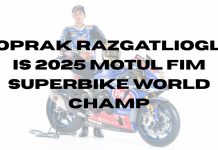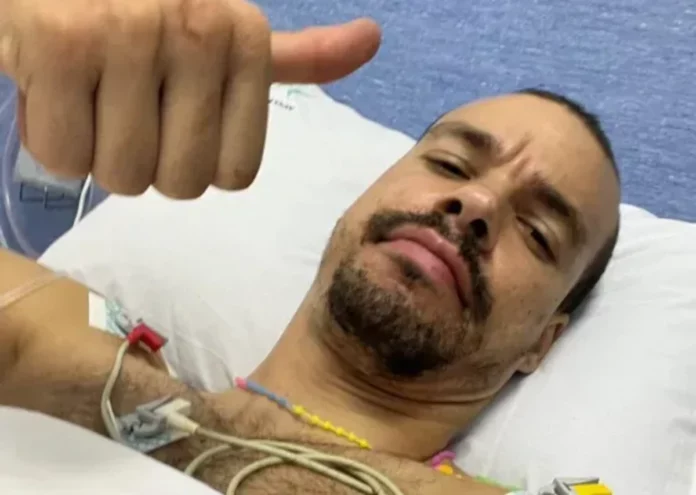Franco Morbidelli’s Portimao Crash
Explore the critical details of Franco Morbidelli’s recent crash during a Portimao test and his subsequent medical journey. This comprehensive overview delves into the incident, the medical evaluations revealing a small clot, and the challenges faced by Morbidelli in his transition to Pramac Ducati. Understand the broader implications on rider safety in professional motorsports and the resilience required for Morbidelli’s return to racing.

The Incident and Immediate Response
Franco Morbidelli, currently racing for Pramac Ducati, experienced a significant crash during a test session in Portimao. This crash, which occurred on the second day of tests organized by the Aruba.it WorldSBK team, involved Morbidelli losing control of his Panigale V4 at Turn 9. Such incidents are not uncommon in the high-stakes world of motorsport, where riders constantly push the limits of speed and machine performance.
Following the crash, the on-site medical team responded promptly, a standard procedure in professional racing to ensure the immediate safety and assessment of the rider. Morbidelli was quickly transported to a hospital in Faro, emphasizing the seriousness of the crash and the need for comprehensive medical evaluation.
Medical Evaluation and Findings
Upon admission to the hospital, Morbidelli underwent a series of medical examinations, including a CT scan. The initial scan revealed a small clot, a finding that, while not immediately life-threatening, required close monitoring due to the potential risks associated with clots, such as stroke or other complications.
The medical team, adhering to protocols for such injuries, scheduled a second CT scan for the following morning. This scan aimed to track the evolution of the clot and to rule out any major injuries that might have been missed in the initial assessment. The results of the second scan were favorable, indicating no major health concerns and allowing for the planning of Morbidelli’s discharge and return home.
Impact on Racing Commitments
Morbidelli’s crash and subsequent medical evaluations have cast uncertainty over his participation in the upcoming Sepang test. Recovering from a crash, especially one that requires hospitalization, is not just about physical healing but also about ensuring that the rider is mentally fit to return to the high-pressure environment of competitive racing.
Additionally, Morbidelli may require medical clearance to fly, given the recent trauma and the presence of a clot. Air travel post-injury can pose risks, particularly in cases involving blood clots, due to the potential for clot movement or growth during a flight. The decision to clear him for travel will depend on his recovery progress and the medical team’s assessment of his fitness to endure a flight.
Transition to Pramac Ducati and Challenges
This season, Morbidelli made a significant move from Yamaha to Pramac Ducati, a transition that involves adapting to a new team, bike, and potentially different racing dynamics. The GP24, the bike Morbidelli is set to ride this season, may have different characteristics and handling compared to the bikes he previously raced. Adapting to a new bike requires not just physical skill but also a mental and emotional adjustment, as riders develop trust and familiarity with their machine.
The crash at Portimao adds another layer of challenge to Morbidelli’s transition. Recovering from an injury, understanding a new bike, and integrating into a new team are all factors that can impact a rider’s performance and confidence.
The Broader Context of Rider Safety
Morbidelli’s crash brings to the forefront the ongoing conversation about rider safety in motorsports. While significant advances have been made in terms of protective gear, track safety, and medical response, the inherent risks associated with high-speed racing remain a constant concern.
Rider safety is a multifaceted issue that encompasses not just the immediate response to crashes but also long-term health monitoring, mental health support, and continuous improvements in protective technology and track design. The swift and comprehensive medical response to Morbidelli’s crash is indicative of the high standards of care in professional motorsports, yet it also serves as a reminder of the dangers these athletes face each time they compete.
Conclusion: The Road Ahead for Morbidelli
As Morbidelli prepares for his recovery and potential participation in the Sepang test, his situation serves as a poignant example of the resilience and challenges faced by professional riders. The transition to Pramac Ducati, combined with the need to recover from his recent crash, presents a unique set of challenges for Morbidelli.
His progress in the coming days and weeks will be closely watched by his team, fans, and the wider motorsport community. The focus will be not just on his physical recovery, but also on his ability to mentally and emotionally rebound from this setback.
The high-speed, high-stakes world of professional motorcycle racing demands not just physical prowess but also immense mental strength and resilience, qualities that Morbidelli will need to draw upon as he navigates his way back to racing form.




































